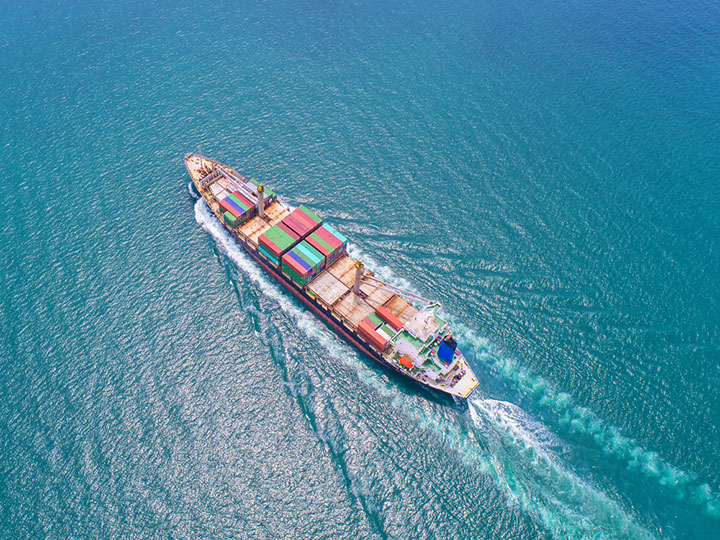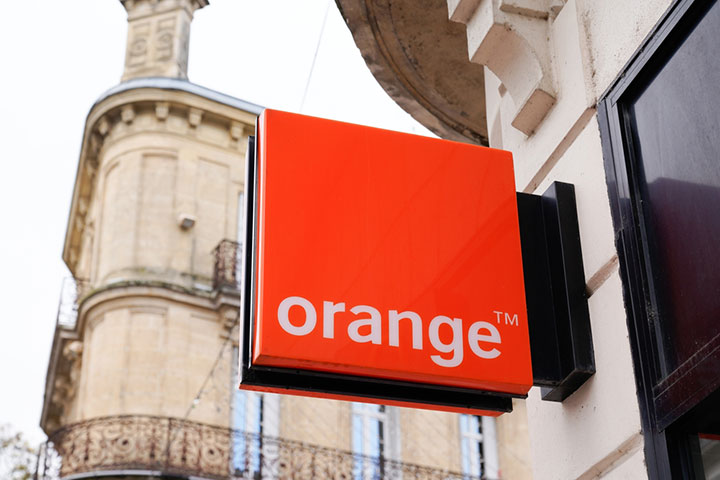 A display of Nespresso coffee pods in Biarritz, France. Nespresso has been utilizing satellite data to enhance its sustainability mission and support its global network of agronomists. (Source: elinaxx1v/Shutterstock)
A display of Nespresso coffee pods in Biarritz, France. Nespresso has been utilizing satellite data to enhance its sustainability mission and support its global network of agronomists. (Source: elinaxx1v/Shutterstock)
ALEXANDRIA, Va. — By the end of last year, the global space economy hit $464 billion with core players that make or own space assets accounting for $70 billion in value. While Euroconsult expects the overall space economy to hit $737 billion within the decade, there is widespread recognition that continued, accelerated growth depends on non-space industries adopting space technology.
Within the last few years, advances in satellite technology have sparked renewed interest among traditional non-space consumers (i.e. telecommunications, agriculture and transportation sectors). Constellations spoke with industry representatives attending World Satellite Business Week 2023 about their current strategy for using satellite data, how it’s changing their business and where they hope to see continued improvements from space service providers.
Coffee, Sugar, EO?
It may seem like a stretch to find a connection between a cup of coffee and space, unless you’re Nespresso. The Swiss coffeemaker has been recognized for its commitment to sustainability, which includes the use of satellite data to support a global network of agronomists. Nespresso primarily leverages satellite remote sensing data to track and monitor deforestation and steer efficient field interventions to smallholder farmers.
According to Stephanie Babin-Cadenet, ESG Strategy and Deployment Manager at Nespresso, the company has partnered with industry experts, as well as Airbus’ Starling and a pilot project with Picterra in Brazil, for crop-specific and more general geospatial monitoring. “With the emergence of machine learning, we see an increasing opportunity to leverage satellite imagery and remote sensing to foster innovation and pilot our ESG strategic deployment on several fronts,” she said.
AB Agri, a subsidiary of Associated British Foods (ABF), operates across the agriculture supply chain to produce and market animal feed, with an emphasis on crops like sugar, corn and wheat. The company has integrated Earth observation data analytics into operations to help manage, track and mitigate risks associated with the supply chain.
“Agriculture is life,” said AB Agri Manager of Strategic Initiatives, Lénaïc Grignard. “Production is very linked to the weather, to the soil and water availability…So, satellite data, Earth observation data, what they bring is an objective KPI [key performance indicator] on the status of a crop and on the production.” This data is particularly important to business planning as it informs the entire supply chain, from fields and processors to feeders and livestock.
Satcom Revival for Telcos, Maritime
The maritime sector is a long-time consumer of satellite technology and continues to leverage a host of services through providers like Tototheo Maritime, whose satellite portfolio includes data, satcom and PNT for navigation. “Space-based technology solutions have become increasingly important as the maritime sector develops,” said Despina Panayiotou Theodosiou, joint CEO of Tototheo Maritime.
The company’s partnerships with leading operators, like Inmarsat, Iridium, SES and Starlink, help meet maritime demand for “seamless communication” and other tools to enhance overall fleet performance. Theodosiou emphasized, “Our role goes beyond maritime technology; it extends to influencing the broader space-related landscape through our innovative approach.”
 In a competitive industry like maritime shipping, satellite data and connectivity solutions can provide an advantage, according to Tototheo Maritime. (Source: MAGNIFIER/Shutterstock)
In a competitive industry like maritime shipping, satellite data and connectivity solutions can provide an advantage, according to Tototheo Maritime. (Source: MAGNIFIER/Shutterstock)
Similarly, the French telco Orange has a long history with satellites, going back more than three decades. “The role of satellite in our business has evolved with time,” said Jean-Luc Vuillemin, Special Technical Advisor the CEO and Chairman at Orange.
Until recently, the company saw its satellite business decreasing and many in the operation viewed satellite technology as a thing of the past. “The perception of satellite, to be frank, was not very good inside our national operation,” he explained. “The good news is, this time is definitely over and…in the last five years, the role and the nature of satellite has changed a lot.”
Today, Orange rents capacity from major operators and has seen growing customer interest in satellite for resilient communications.
Expanding Existing Services or Creating New Ones?
For many end users, satellite is a way to complement existing services, by extending their reach, in the case of satcom, or improving insights, compliance and risk mitigation with EO. Increasingly, some non-space businesses have found the addition of space technology has led to the creation of entirely new client services.
Currently, AB Agri is using satellite data primarily to improve operating efficiencies, but Grignard teased the addition of new client services related to space technology coming soon.
For Tototheo Maritime, many of its core connectivity services rely on satellite links, so the company’s approach encompasses “developing new possibilities, improving existing operations, and exploring creative applications of satellite data.”
The use of space creates an edge and an important differentiator in an industry as competitive as maritime shipping. “Our integration of space-enabled technologies and services provides us with a notable advantage,” said Theodosiou. “The maritime sector is increasingly turning to satellite connectivity to achieve greater efficiencies, and those shipping companies who have been at the vanguard of this have, with our help, sought and found new ways of achieving greater partnerships with their clients.”
At Orange, partnerships with satellite operators have helped the company extend services, explore new use cases and satisfy customer demand for resiliency. Vuillemin cited growing customer interest in satellite as an added layer of resiliency on top of terrestrial fiber and mobile networks. “For us, having the possibility to propose this kind of thing is interesting because it supports our business and at the same time it creates some new turnover.”
While the satellite operator may derive significant business from the telco, the relationship is not necessarily “symmetric,” as satellite accounts for a small portion of the telco’s revenues. As Vuillemin described the situation, “Satellite is not our core business, but it is core to our business.”
Cost and Complexity Can Hinder Adoption
Even as satellite technology becomes more accessible, cost and complexity continue to be obstacles to wider adoption in the terrestrial economy. The cost of satellite data and services was the most common challenge cited by people contacted for this article. The growing number of constellations and the emergence of new startups have helped price competition, but companies remain cautious that the value justifies the cost.
 An Orange shop entrance in Aquitane, France. The multinational telco has a long history of using satellite technology that continues to evolve. (Source: sylv1rob1/Shutterstock)
An Orange shop entrance in Aquitane, France. The multinational telco has a long history of using satellite technology that continues to evolve. (Source: sylv1rob1/Shutterstock)
Finding the right talent to understand and utilize satellite data was also a common struggle. “The adoption of space technology is not that easy,” noted Grignard. AB Agri has been working with analytics providers and is aware of the challenges in finding the most relevant data that can provide actionable intelligence. “It’s both a question of skills as well as finding the provider with the right business model.”
Similarly, Babin-Cadenet said that “address[ing] complexity for non-expert audiences” was among the biggest challenges in integrating satellite data into Nespresso’s business operations.
For Orange, there continue to be reputational challenges associated with satellite based on previous experience with expensive, poorly integrated services. However, there is growing recognition that satellite is undergoing an evolution with new technologies, more constellations and more compelling use cases.
An Expanding Role for Satellite Across Industries
Across the board, business leaders contacted by Constellations see an expanding role for space and satellite technology within their companies or industries.
Looking ahead to the next 5-10 years, Theodosiou anticipates, “The adoption of satellite technology within shipping will undergo an accelerated transformation.” New service providers and increased offerings will likely lead to decreased costs and increased availability, she continued. Moreover, the integration of terrestrial 5G with satellite links could further enhance vessel connectivity.
Satellite imagery and analytics have already contributed to modern agriculture and will play a more natural role in the future, according to Grignard. “Twenty years ago, very few people in the agriculture industry understood what Earth observation data could bring,” she noted. “I’m convinced that in 10 years from now, satellite data will be like weather data is today in agriculture: something that is used on a daily basis.”
There is also growing excitement about the convergence of artificial intelligence and an ever-growing volume of satellite data. This can include image correction and more granular, crop-specific insights for end users. Babin-Cadenet noted that modeling and computing capabilities related to AI “will unlock many bottlenecks and create new use cases we are not yet envisioning.”
Explore More:
Space Executive Explains Growth Trends for Value-Added Space Services
Podcast: Satellite-as-a-Service, Data Fusion and Sovereign Earth Observation
Podcast: Mainstreaming Satcom and Convergence with Telcos
Satellite IoT Opportunities: Drilling into Oil and Gas
